The Balearic Islands, a breathtaking archipelago nestled in the Mediterranean Sea, offer a captivating blend of stunning landscapes, rich cultural heritage, and vibrant tourism. From the vibrant streets of Palma de Mallorca to the tranquil coves of Menorca, these islands promise an unforgettable experience.
With their Mediterranean climate, pristine beaches, and diverse ecosystems, the Balearic Islands have long been a popular destination for travelers seeking sun, relaxation, and adventure. However, beyond their natural allure, these islands boast a fascinating history, a vibrant cultural scene, and a thriving economy.
Geography and Demographics

The Balearic Islands, an autonomous community of Spain, are a group of islands located in the western Mediterranean Sea, approximately 200 kilometers off the eastern coast of the Iberian Peninsula.
The archipelago has a rich history, with evidence of human habitation dating back to the Bronze Age. The islands were successively ruled by the Carthaginians, Romans, Vandals, Byzantines, and Moors before being conquered by the Kingdom of Aragon in the 13th century.
Demographics
The Balearic Islands have a population of over 1.1 million people, with the majority living on the island of Mallorca. The islands are a popular tourist destination, with over 10 million visitors annually.
The following table provides a comparison of the population, area, and GDP of each island:
| Island | Population | Area (km2) | GDP (€ millions) |
|---|---|---|---|
| Mallorca | 955,193 | 3,640 | 24,943 |
| Menorca | 97,327 | 694 | 2,583 |
| Ibiza | 153,462 | 571 | 3,721 |
| Formentera | 12,851 | 83 | 291 |
Climate and Environment
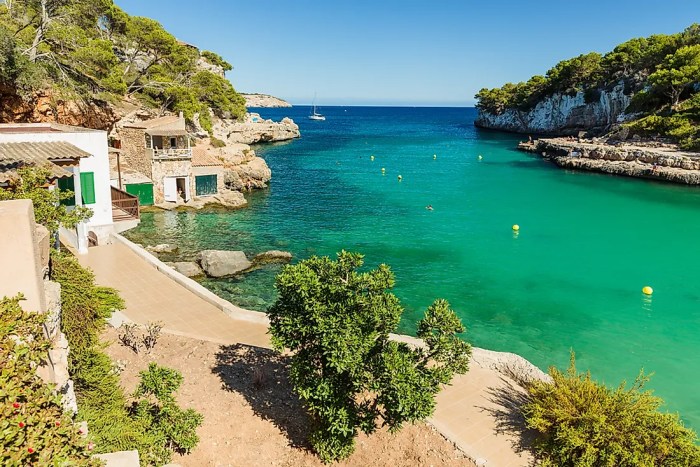
The Balearic Islands enjoy a pleasant Mediterranean climate, characterized by mild winters and warm, sunny summers. The average annual temperature hovers around 17 degrees Celsius, making it an ideal destination year-round.
However, the islands’ popularity as a tourist destination has had a significant impact on their environment. The influx of visitors has led to increased pollution, deforestation, and water scarcity.
Conservation Efforts
Recognizing the importance of preserving the islands’ natural beauty, local authorities have implemented various conservation efforts.
- Establishing protected areas: Several areas of the islands have been designated as national parks or nature reserves, providing sanctuary for wildlife and preserving unique ecosystems.
- Promoting sustainable tourism: Initiatives are underway to encourage responsible tourism practices, such as reducing plastic waste and promoting local businesses that prioritize environmental conservation.
- Implementing renewable energy sources: The islands are investing in solar and wind power to reduce their reliance on fossil fuels and minimize their carbon footprint.
Culture and Heritage
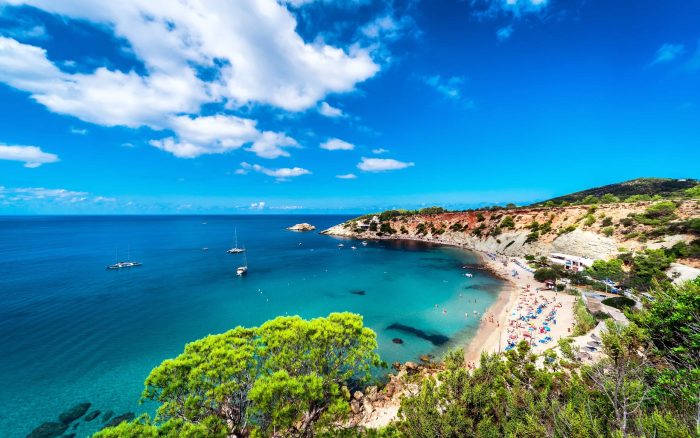
The Balearic Islands boast a rich cultural heritage that is a blend of influences from Catalan, Spanish, and other Mediterranean cultures. This diverse heritage is reflected in the islands’ architecture, art, music, and traditions.
Architecture
The Balearic Islands are home to a variety of architectural styles, from the Romanesque churches of the Middle Ages to the modernist buildings of the early 20th century. One of the most distinctive architectural features of the islands is the “casas payesas,” traditional farmhouses built of stone and wood with thick walls and small windows.
Art
The Balearic Islands have a long history of artistic production, dating back to the prehistoric era. The islands are home to a number of museums and galleries, which showcase the work of local and international artists. Some of the most famous artists from the Balearic Islands include the painter Joan Miró and the sculptor Antoni Tàpies.
The Balearic Islands, a breathtaking archipelago in the Mediterranean Sea, are renowned for their pristine beaches, crystal-clear waters, and vibrant culture. Among these idyllic islands, Alcudia, located on the northern coast of Mallorca, stands out as a must-visit destination. Alcudia boasts a stunning coastline, medieval architecture, and lively nightlife, making it a perfect blend of history, beauty, and entertainment.
Whether you seek relaxation on sun-kissed shores or immersion in rich heritage, the Balearic Islands, with Alcudia as a highlight, offer an unforgettable experience.
Music
The Balearic Islands have a vibrant music scene, which is influenced by a variety of musical genres, including folk, rock, and electronic music. The islands are home to a number of music festivals, including the Sonar Festival, which is one of the most important electronic music festivals in the world.
Traditions
The Balearic Islands have a number of traditional festivals and customs that are still practiced today. Some of the most popular festivals include the Festa de Sant Joan, which is celebrated on June 24th, and the Festa de la Verge de Lluc, which is celebrated on September 8th. These festivals are a time for locals and visitors to come together and celebrate the islands’ culture and heritage.
Tourism and Economy
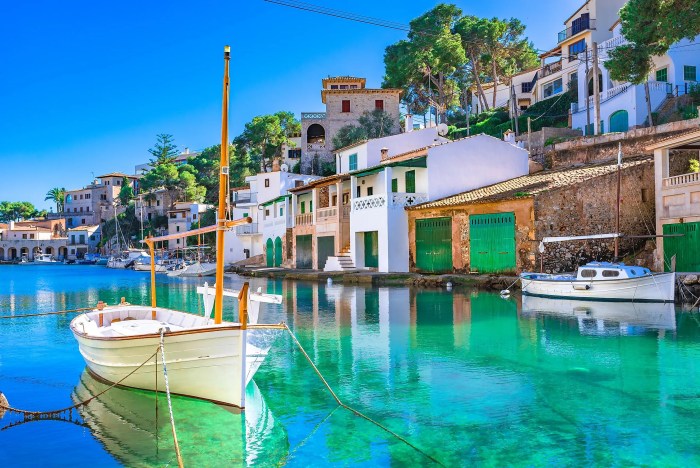
Tourism is a significant economic driver for the Balearic Islands. It accounts for approximately 80% of the islands’ GDP and provides employment for a large portion of the workforce. The islands’ warm climate, beautiful beaches, and vibrant culture make them a popular destination for tourists from all over Europe and beyond.
The tourism industry in the Balearic Islands has faced a number of challenges in recent years, including the global economic downturn, increased competition from other tourist destinations, and the COVID-19 pandemic. However, the islands have also taken steps to address these challenges, such as investing in infrastructure, promoting sustainable tourism, and diversifying the economy.
The impact of COVID-19 on the tourism sector
The COVID-19 pandemic has had a significant impact on the tourism industry in the Balearic Islands. In 2020, the number of tourists visiting the islands fell by over 90%, leading to a sharp decline in revenue. The pandemic has also led to job losses and business closures in the tourism sector.
The tourism industry in the Balearic Islands is slowly recovering from the pandemic. In 2022, the number of tourists visiting the islands increased by over 50% compared to 2021. However, the industry is still facing a number of challenges, such as the ongoing impact of the pandemic, the war in Ukraine, and the rising cost of living.
Infrastructure and Transportation
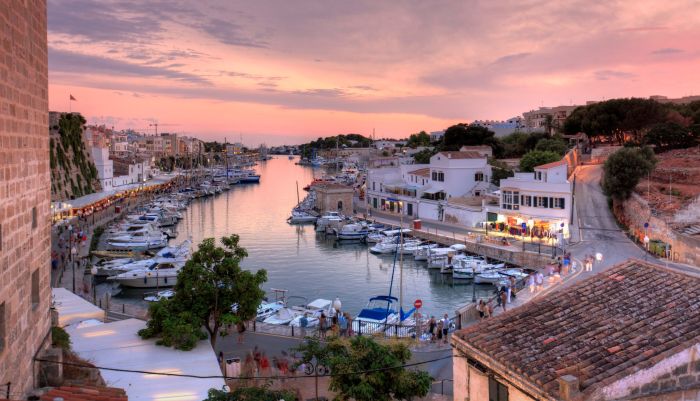
The Balearic Islands boast a well-developed transportation network connecting the islands and providing access to major destinations worldwide. Airports, ports, and roads form the backbone of the infrastructure, while ferry services play a crucial role in inter-island connectivity. Public transportation systems within each island ensure convenient movement for residents and visitors alike.
Airports
- Palma de Mallorca Airport (PMI) on Mallorca is the largest and busiest airport in the Balearics, serving as a gateway to the archipelago. It offers direct flights to major cities across Europe and beyond.
- Ibiza Airport (IBZ) on Ibiza is the second-largest airport, providing connections to domestic and international destinations.
- Menorca Airport (MAH) on Menorca serves both domestic and international flights, with a focus on seasonal tourist traffic.
- Formentera Airport (FOM) on Formentera is a small airport primarily used for domestic flights and private aviation.
Ports
The Balearic Islands have several major ports, including:
- Palma de Mallorca Port is the largest and most important port, handling both passenger and cargo traffic.
- Ibiza Port is a major port for passenger ferries and cruise ships, connecting the island to mainland Spain and other destinations.
- Mahón Port on Menorca is a natural harbor that serves as a base for both commercial and recreational vessels.
- La Savina Port on Formentera is the main port of the island, connecting it to Ibiza and mainland Spain.
Roads
The Balearic Islands have a well-maintained road network, with major highways connecting the main cities and towns. The roads are generally in good condition, providing convenient transportation options for both locals and tourists.
Ferry Services
Ferry services are essential for inter-island connectivity in the Balearics. Several ferry companies operate regular services between the islands, with high-speed ferries offering fast and comfortable connections.
Public Transportation
Each island has its own public transportation system, including buses and taxis. The buses are generally reliable and affordable, connecting major tourist destinations and residential areas.
Notable Cities and Towns

The Balearic Islands are home to a diverse range of cities and towns, each with its own unique history, attractions, and cultural significance.
If you’re planning a trip to the Balearic Islands, be sure to check out the amalfi coast photos. The stunning scenery of the Amalfi Coast is sure to inspire you to add this destination to your itinerary. And while you’re in the Balearic Islands, don’t forget to visit the beautiful beaches, explore the charming towns, and sample the delicious local cuisine.
From the bustling capital of Palma de Mallorca to the charming hilltop village of Valldemossa, there is something to suit every taste and preference.
Palma de Mallorca, Balearic islands
Palma de Mallorca is the capital and largest city of the Balearic Islands. It is a vibrant and cosmopolitan city with a rich history and culture.
The city is home to a number of impressive historical landmarks, including the Cathedral of Palma de Mallorca, the Bellver Castle, and the Lonja de Palma.
Palma de Mallorca is also a popular tourist destination, with a wide range of beaches, restaurants, and shops.
The Balearic Islands, known for their picturesque beaches and vibrant culture, will serve as a backdrop for the upcoming 2026 FIFA World Cup. As the world’s most prestigious football event descends upon the islands, the Balearic Islands will showcase their unique charm and hospitality to fans from around the globe.
After the thrilling matches, visitors can explore the islands’ hidden coves, indulge in local delicacies, and soak up the Mediterranean sun, making their trip to the Balearic Islands an unforgettable experience.
Sóller
Sóller is a picturesque town located in the northwest of Mallorca. It is known for its beautiful scenery, its traditional architecture, and its orange groves.
The town is home to a number of historical landmarks, including the Church of Sant Bartomeu, the Monastery of Sant Francesc, and the Gran Hotel Sóller.
Sóller is also a popular tourist destination, with a wide range of beaches, restaurants, and shops.
Valldemossa
Valldemossa is a charming hilltop village located in the west of Mallorca. It is known for its beautiful scenery, its traditional architecture, and its association with the composer Frédéric Chopin.
The village is home to a number of historical landmarks, including the Royal Charterhouse of Valldemossa, the Church of Sant Bartomeu, and the Chopin Museum.
Valldemossa is also a popular tourist destination, with a wide range of beaches, restaurants, and shops.
Ibiza Town
Ibiza Town is the capital and largest city of the island of Ibiza. It is a vibrant and cosmopolitan city with a rich history and culture.
The city is home to a number of impressive historical landmarks, including the Dalt Vila, the Cathedral of Ibiza, and the Museu Puget.
Ibiza Town is also a popular tourist destination, with a wide range of beaches, restaurants, and shops.
Formentera
Formentera is the smallest and most southerly of the Balearic Islands. It is a tranquil and unspoiled island with beautiful beaches, crystal-clear waters, and lush vegetation.
The island is home to a number of small towns and villages, including Sant Francesc Xavier, Es Pujols, and La Savina.
Formentera is a popular tourist destination, with a wide range of beaches, restaurants, and shops.
Final Thoughts
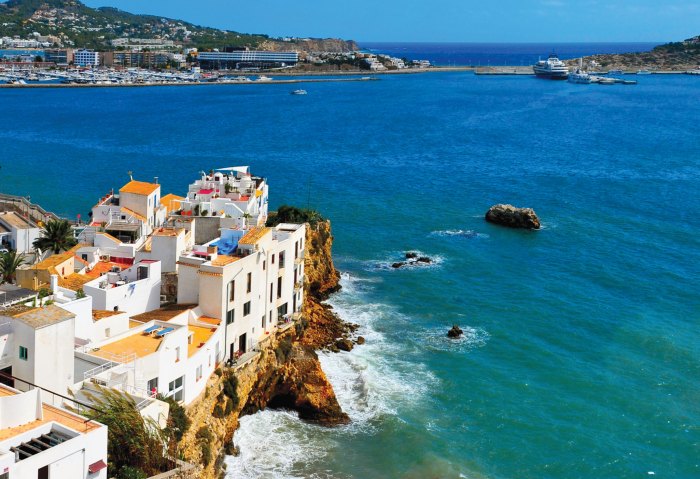
The Balearic Islands continue to captivate visitors with their unique blend of natural beauty, cultural heritage, and modern amenities. As the tourism industry evolves, the islands are committed to sustainable practices that preserve their delicate ecosystems while ensuring a memorable experience for generations to come.
Whether you seek relaxation on sun-kissed beaches, exploration of ancient ruins, or immersion in a vibrant cultural scene, the Balearic Islands offer an unforgettable destination that will leave a lasting impression.
Detailed FAQs: Balearic Islands
What is the capital of the Balearic Islands?
Palma de Mallorca
What is the largest island in the Balearic Islands?
Mallorca
What is the official language of the Balearic Islands?
Catalan and Spanish
What is the currency used in the Balearic Islands?
Euro